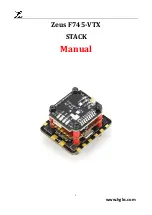
5.3
Inspection Notes
Air Creation wings have been designed to permit easy inspection and operators should
have no difficulty in assessing problems or recognizing damage if visual checks are
carried out correctly.
Maintenance checks may require partial disassembly of the wing. Inspection should
include a thorough visual check of the condition of the component and the attachment
point in adequate lighting conditions.
Cleaning of the component may be required for proper inspection. Significant scratches,
cracks, galling, corrosion or any other mechanical wear of the component is reason for
replacement. The sail requires special attention to the condition of the fabric, after
significant amounts of environmental exposure to elements such as UV radiation,
chemicals and heat, as well as mechanical wear (and or tears).
The Pilot's Operating Handbook outlines checks required prior to each flight.
5.3.1
Tubing
Inspection
Inspect tubing for cracks, damage from abrasion, corrosion, elongated holes or distortion
in tube surface.
Inspect holes in tubing and surrounding areas for cracks during scheduled inspections.
Ensure that the areas are clean. A 10X magnifying glass and good lighting will improve
this visual inspection for cracks.
General Care
The tubes can be washed down with warm water and a light detergent followed by
rinsing with fresh water.
There are no known fatigue problems with Air Creation wings, but excessive loads and
vibration can weaken the structure. Regular inspection for hairline cracks in areas under
high stress, such as bolt holes and tube junctions is recommended.
Some components can be replaced with ease, for difficult repairs or if the repair process
is not fully understood consult your Air Creation technical station or the Air Creation
factory.
Installation & Removal
When removing or installing tubing do not bend or force tubes.
Corrosion
Inspect tubing for corrosion inside and out. Discoloration of the metal may indicate
corrosion. Salt is the most common cause of corrosion during coastal operation. Parts
affected by salt must be stripped and thoroughly cleaned before reassembly. The cause of
the corrosion must be identified and eliminated. If corrosion (pitting or oxidation) is
present, the component must be removed and replaced with a new part.
GDMMIX13-1G Version
0010
30
Summary of Contents for IXess 13
Page 42: ......















































